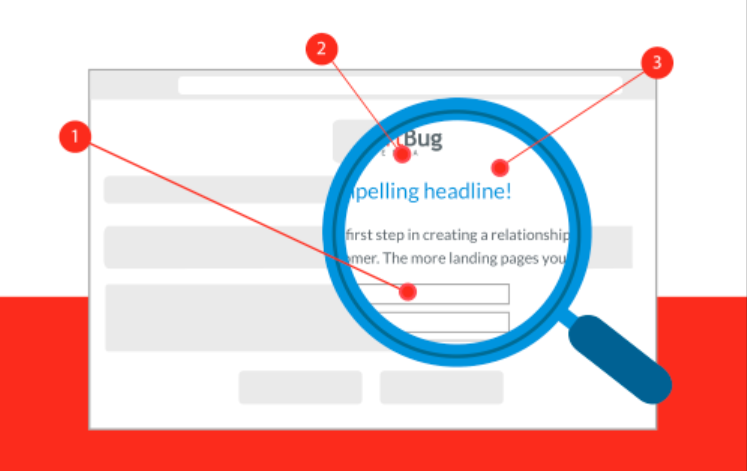In the dynamic realm of digital marketing, where every click counts, the distinction between a homepage and a landing page is paramount. These two entities serve as the gateway to your online presence, but they operate in distinctly different capacities. In this article, we will delve deep into the intricacies of homepages and landing pages, exploring their unique roles, design principles, and how they can be optimised for maximum conversion.
- Homepage:
- Prioritise clear navigation.
- Showcase your brand identity.
- Offer a glimpse of your website’s content.
- Build trust and credibility.
- Landing Page:
- Focus on a single, clear call to action.
- Eliminate distractions.
- Maintain message alignment with marketing campaigns.
- Use persuasive content and visuals.
The Role of Homepages
In the expansive world of digital marketing, where every pixel can make a difference, the homepage stands as the digital storefront—a visual representation of your brand’s identity. It´s not merely a page; it’s the face of your brand, the first encounter users have with your digital domain.
Imagine the homepage as a bustling city center, where streets branch out in different directions, leading visitors to distinct neighbourhoods—each representing a unique aspect of your brand. By strategically organising and showcasing key elements, the homepage becomes a virtual tour guide, ushering users through the digital realm with intuitive navigation. This interconnectedness is not just about displaying information; it’s about creating an immersive and seamless journey, ensuring that users effortlessly find what they seek
Moreover, the homepage serves as the stage for the first act of your digital narrative. It’s where the importance of leaving an indelible first impression becomes paramount. In those initial moments, users form perceptions that can influence their entire interaction with your brand. From captivating headlines that pique curiosity to visually appealing elements that evoke emotion, the homepage sets the tone for the user’s entire journey. The design, layout, and messaging all contribute to this crucial first impression, laying the foundation for a positive and engaging user experience.
Designing an Engaging Homepage
Simplicity in navigation is a cornerstone of effective homepage design, embodying the principle of user-friendly interaction that guides visitors through a seamless exploration of your digital domain. Much like well-organised city streets, the navigation is designed for clarity and simplicity, ensuring that users can effortlessly discover the diverse facets of your brand. This philosophy extends beyond mere functionality; it encompasses the overall aesthetics of the homepage, where the careful selection of visual elements contributes to crafting an interface that is both intuitively navigable and aesthetically pleasing.
The creation of an aesthetically pleasing interface involves a thoughtful consideration of the Elements of Visual Appeal. Every visual element, from images to color schemes, is meticulously chosen to foster a harmonious and inviting atmosphere. This is not about visual appeal for its own sake; rather, it is a strategic approach to enhance the overall user experience. It requires showcasing core content without overwhelming the user. Instead of bombarding visitors with an exhaustive array of information, the homepage acts as a curated showcase, highlighting key aspects of your brand that align with user expectations and interests.
Content Strategy for Homepages
Crafting a compelling headline is just the beginning; it serves as the narrative hook, drawing users deeper into the story that unfolds on your homepage. Whether it’s a succinct tagline or a compelling value proposition, the headline sets the tone, sparking curiosity and creating an anchor for users to connect with the content that follows.
The strategic placement of call-to-action buttons becomes crucial, directing users to take the desired action. These could range from encouraging users to explore product offerings, subscribe to newsletters, or initiate a purchase. The placement, design, and messaging of CTAs are all part of a meticulous strategy aimed at channeling user engagement in a way that benefits both the visitor and the brand.
The Anatomy of Landing Pages

Unlike the homepage’s multifunctional role, the landing page is singular in purpose—aligning with specific campaigns. Whether it’s capturing leads, promoting a product, or encouraging a download, the landing page is tailored to guide visitors toward a singular conversion goal. By stripping away extraneous elements, a landing page becomes a streamlined conduit, directing users to take a specific action without the distractions found on other pages.
The Power of Singularity: Landing Pages and Campaign Alignment
The strength of landing pages lies in their alignment with specific campaigns. Each campaign has a unique goal, and the landing page serves as the digital handshake that aligns with and amplifies that goal. The power of singularity is evident in the seamless integration of a landing page with a particular marketing initiative. Whether it’s a social media campaign, a pay-per-click (PPC) ad, or an email marketing effort, the landing page is designed to provide continuity. This alignment ensures that users experience a cohesive narrative from the moment they click on an ad to the final conversion action on the landing page.
Eliminating Distractions: The Role of Minimalism
In the world of landing pages, less is often more. The role of minimalism is paramount, aiming to eliminate distractions and keep the user’s attention laser-focused on the intended goal. Extraneous links, unrelated content, and superfluous design elements are stripped away to create a clean and uncluttered canvas. The minimalist approach is not about a lack of creativity but a deliberate choice to enhance user experience. By presenting information in a straightforward manner, a landing page reduces cognitive load and guides users through a clear and frictionless journey, ultimately increasing the likelihood of conversion.
Design Principles for High-Converting Landing Pages
Visual consistency becomes paramount, aligning the landing page seamlessly with the aesthetics of the campaign it represents. Crafting compelling headers that make an impact above the fold is explored, recognising that the initial seconds are critical in capturing user attention. Mobile responsiveness is not just a preference but a necessity, ensuring accessibility across a spectrum of devices, catering to the diverse ways users engage with digital content.
Urgency and scarcity are psychological triggers that drive action, and we uncover how to integrate them seamlessly into the content strategy to compel users to take the desired action.
Decoding Consumer Psychology: Tailoring Content to the Audience

In the intricate dance of digital marketing, understanding consumer psychology is akin to holding the key to unlocking meaningful engagement and conversions.
Understanding the Audience
Profiling Your Audience: Tailoring Design and Copy to Specific Segments
The foundation of effective consumer engagement lies in the ability to profile your audience meticulously. Tailoring design and copy to specific segments involves delving deep into the demographics, behaviours, and preferences of your target audience. By creating detailed customer personas, marketers can craft content that resonates with the unique needs and desires of different segments. From the visual elements that appeal to a specific age group to the language that aligns with distinct preferences, tailoring design and copy ensures that your content speaks directly to the hearts and minds of those you aim to reach.
Analysing User Behaviour: Utilising Data for Informed Decisions
Consumer behaviour is a treasure trove of insights waiting to be deciphered. Utilising data analytics allows marketers to make informed decisions based on how users interact with content. By tracking metrics such as page views, click-through rates, and time spent on pages, marketers gain a nuanced understanding of what captures attention and what might be causing friction. This analysis forms the basis for iterative improvements, steering the content strategy toward what truly resonates with the audience.
A/B Testing: Iterative Refinement for Optimal Performance
A/B testing emerges as a crucial tool in the arsenal of consumer psychology. It involves presenting variations of content to different segments of the audience and analysing which performs better. Whether it’s testing different headlines, calls-to-action, or design layouts, A/B testing provides valuable insights into audience preferences. This iterative refinement process ensures that the content continually evolves, aligning with the dynamic landscape of consumer behaviour.
Building Trust Through Design and Content
Trust Signals: Incorporating Testimonials, Reviews, and Trust Badges
Building trust is the cornerstone of consumer relationships, and trust signals play a pivotal role in this endeavor. Incorporating testimonials, reviews, and trust badges acts as social proof, assuring potential customers that others have had positive experiences with your brand. These elements create a sense of credibility, authenticity, and reliability, influencing consumer decisions and fostering a sense of trustworthiness in your brand.
Transparency in Communication: Clear Messaging for Authenticity
In a world saturated with information, consumers value transparency. Clear messaging becomes a beacon of authenticity, ensuring that what you communicate aligns with the actual experience your brand delivers. Whether it’s about product features, pricing, or company values, transparent communication establishes a genuine connection with the audience. It’s not just about selling a product or service; it’s about building a relationship based on honesty and integrity.
Security Assurances: Addressing Privacy Concerns
Addressing privacy concerns is an integral aspect of consumer psychology, especially in an era where data breaches and online security are prominent concerns. Clearly communicating security assurances, whether through secure payment gateways, privacy policies, or SSL certifications, reassures users that their information is handled with the utmost care. This proactive approach builds a sense of trust, assuaging concerns and fostering a secure environment for user interaction.

Optimisation Techniques: Enhancing Conversion Rates
In the realm of conversion optimisation, data is king. Homepage Optimisation Strategies takes a deep dive into leveraging analytics insights. Understanding user behaviour allows for the refinement of the user experience. A/B testing becomes a strategic tool for iterative improvements, ensuring that the homepage is a constantly evolving entity. Load time, often overlooked, emerges as a critical factor—ensuring swift access to content is a non-negotiable element of homepage optimisation.
Shifting our focus to landing pages, Landing Page Optimisation Strategies becomes a playbook for conversion-centric design. Every element is strategically placed to guide users toward the call-to-action. Form optimisation becomes an art, streamlining information capture without creating friction. Visual hierarchy takes the forefront, directing user attention to key elements that drive conversion. In essence, optimising landing pages becomes a meticulous craft, where every pixel serves the singular purpose of enhancing conversion rates.

